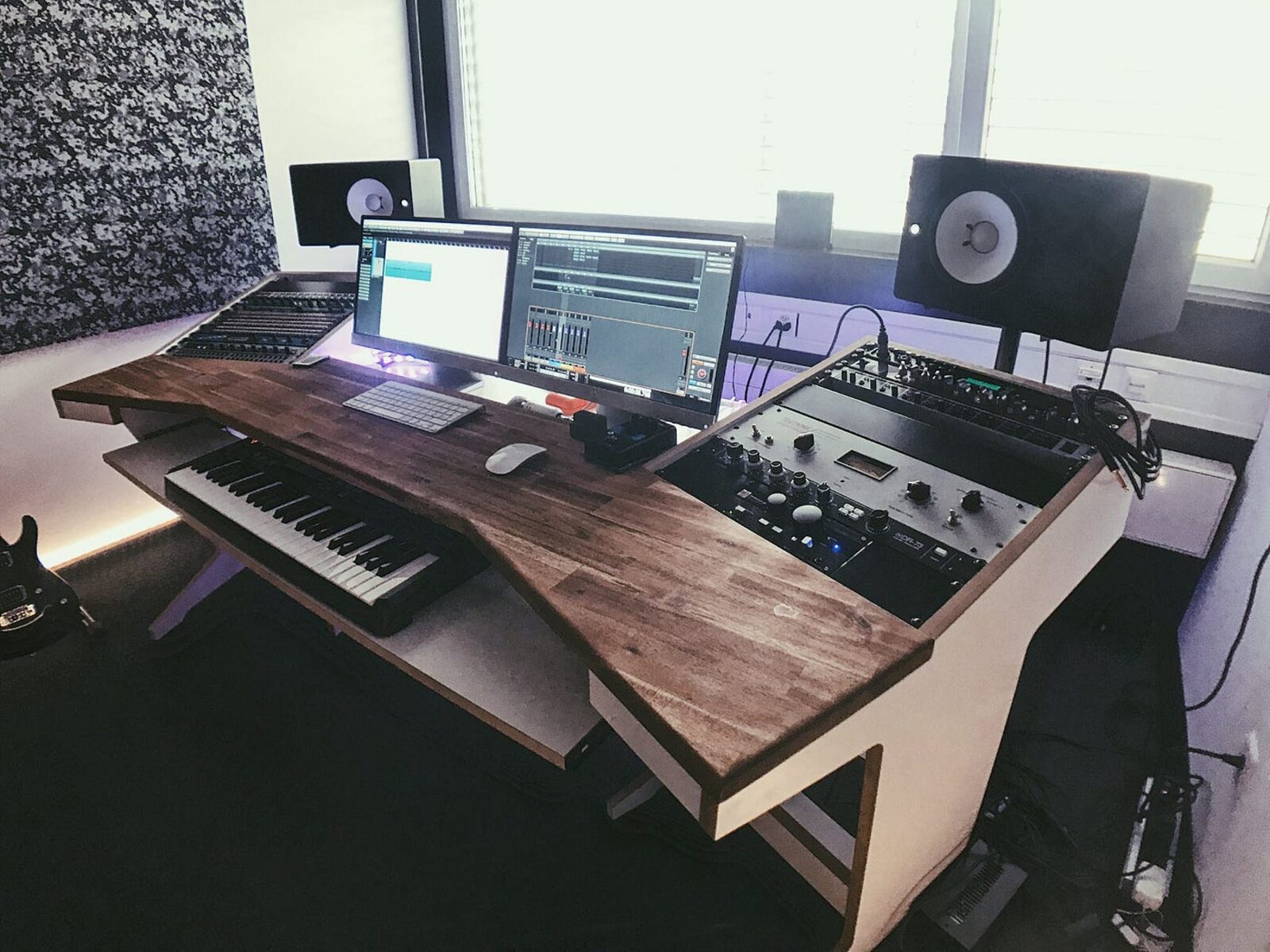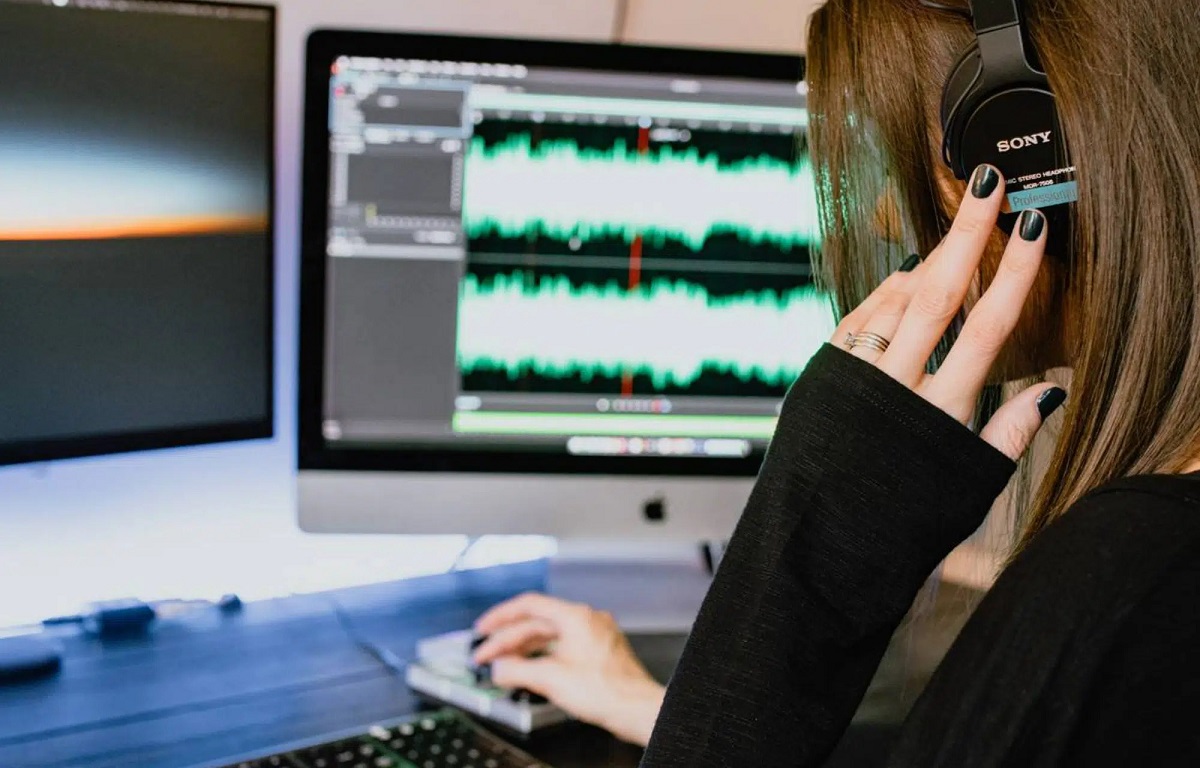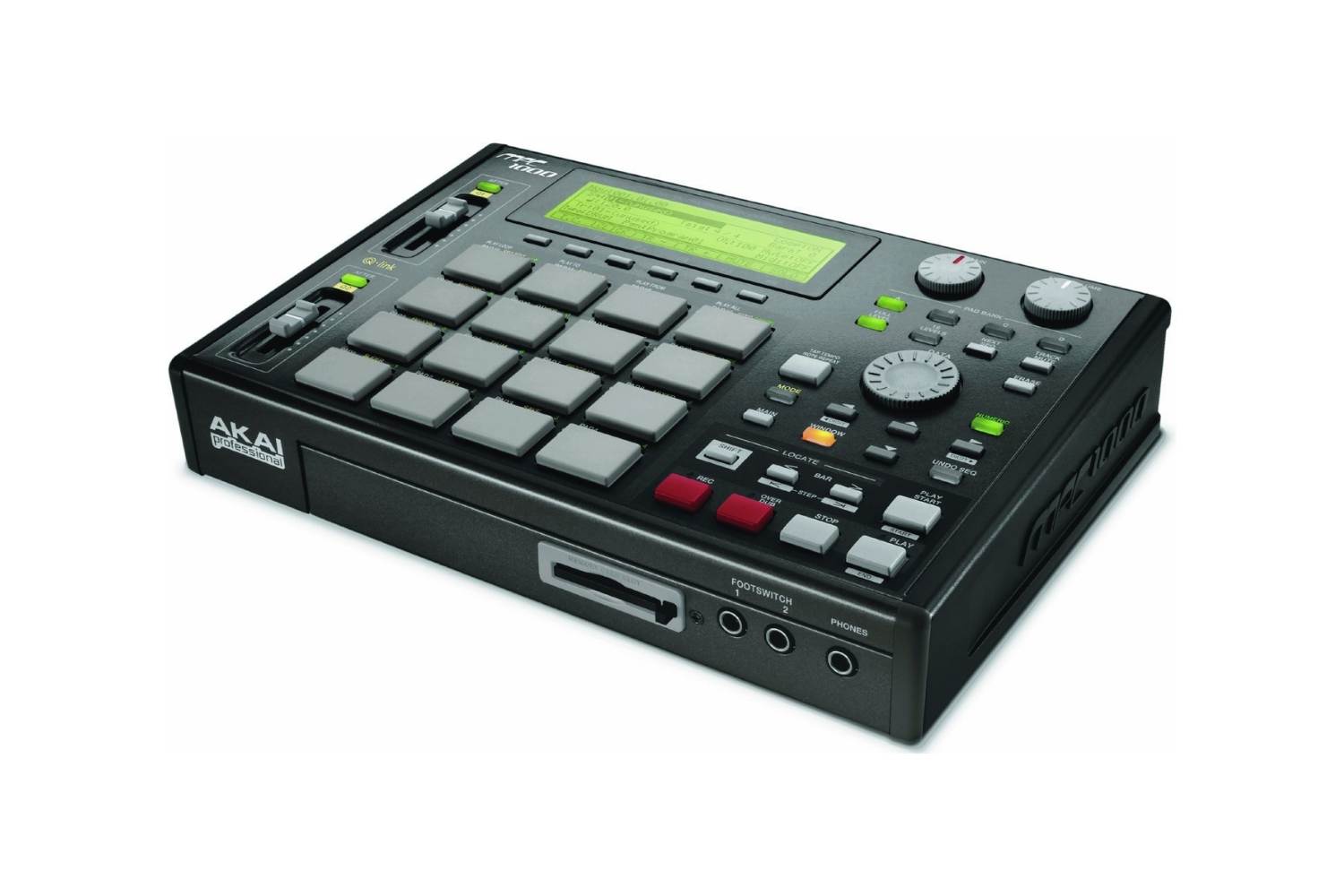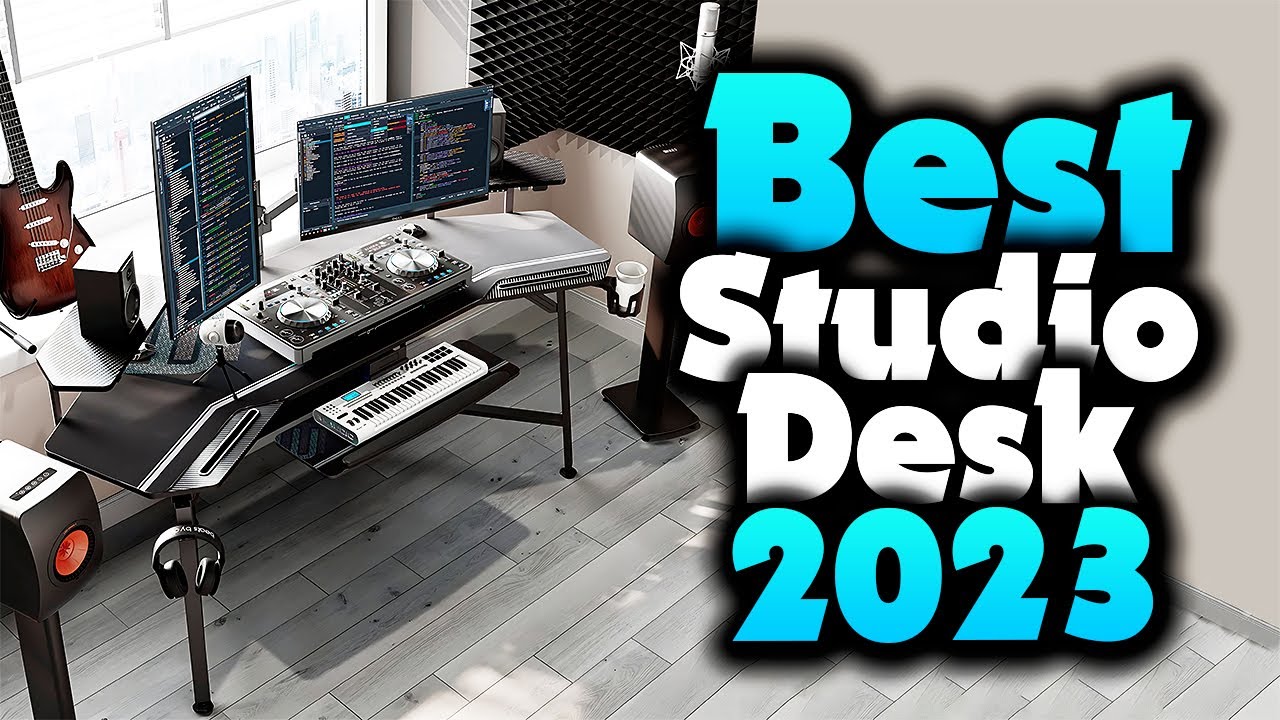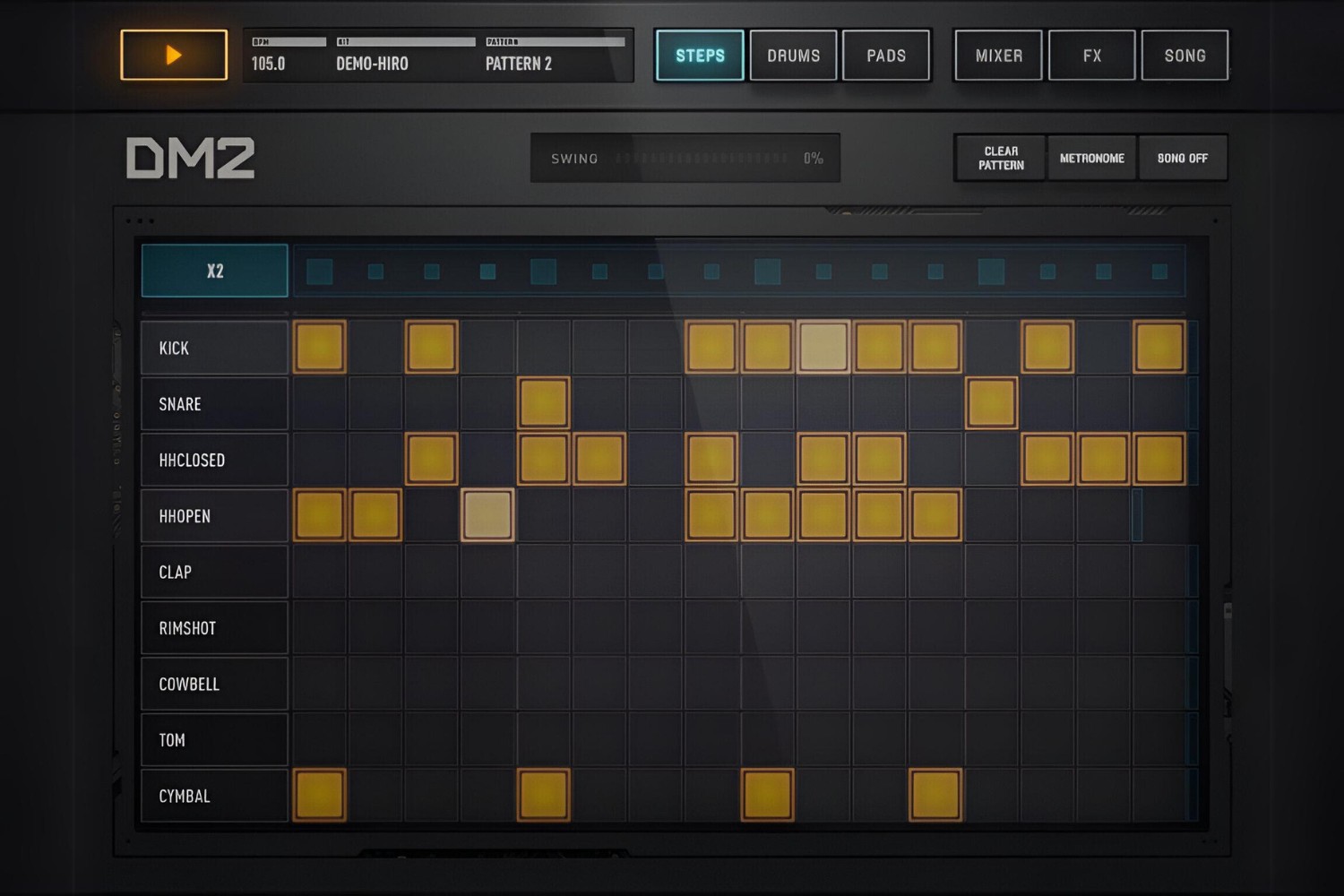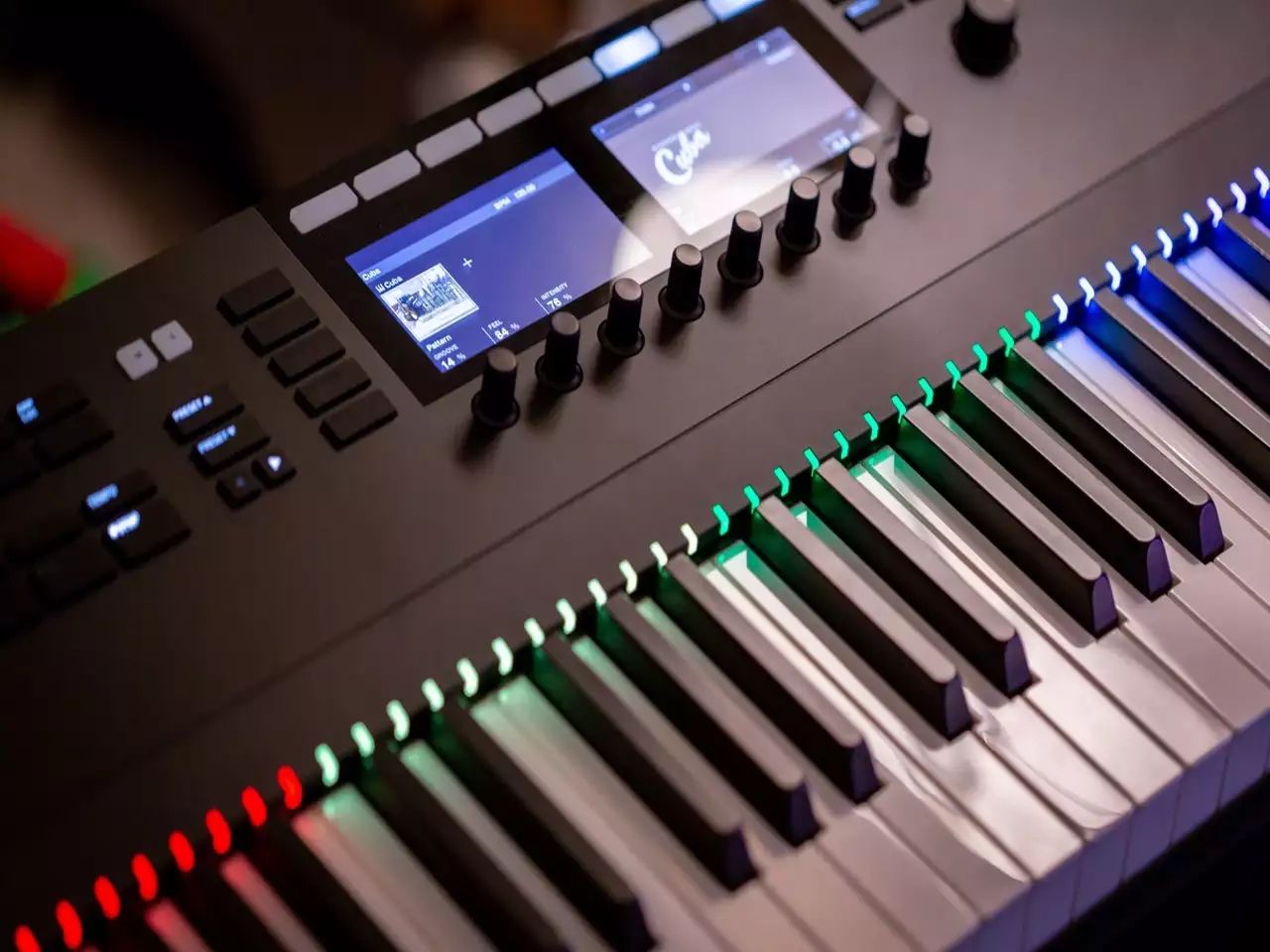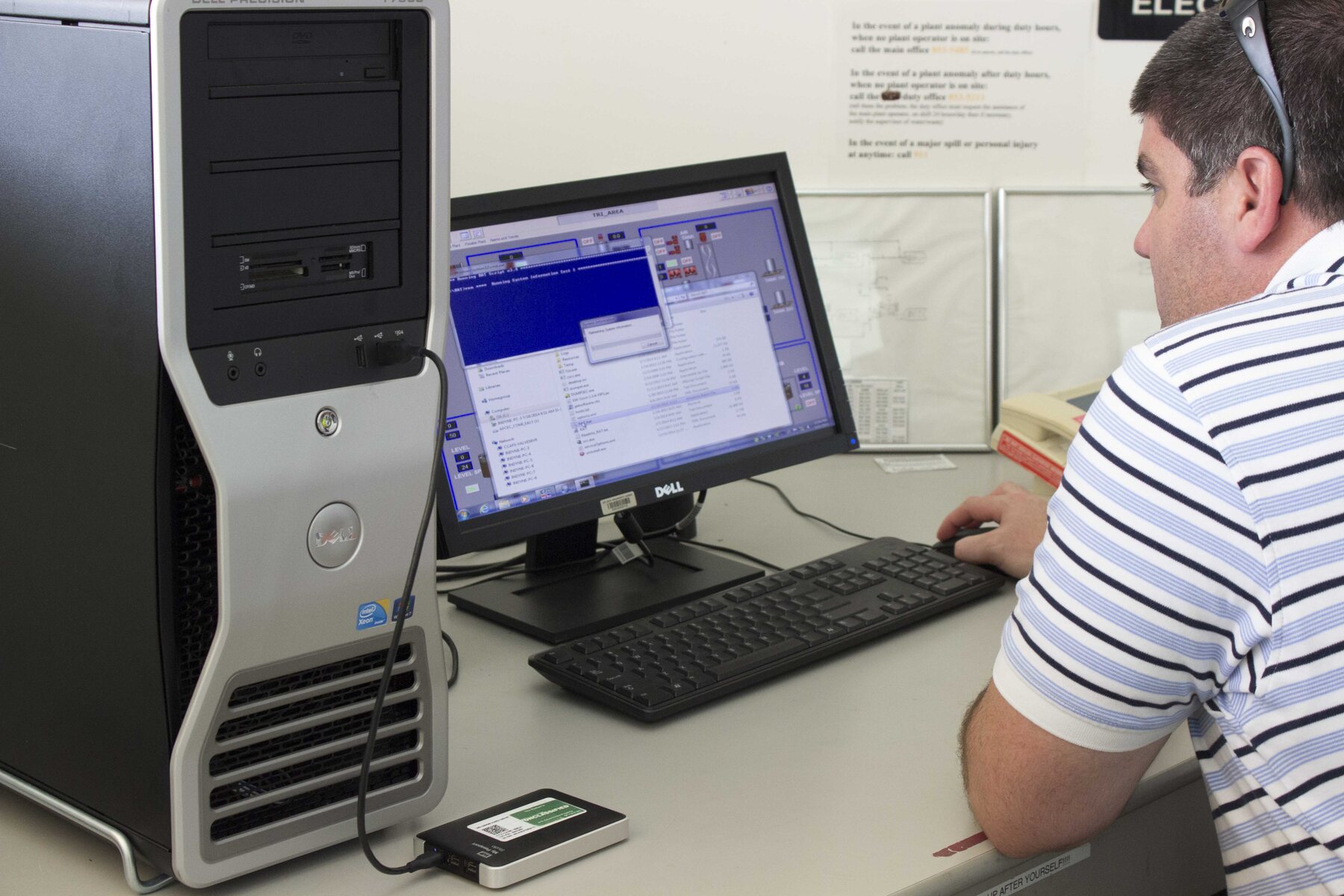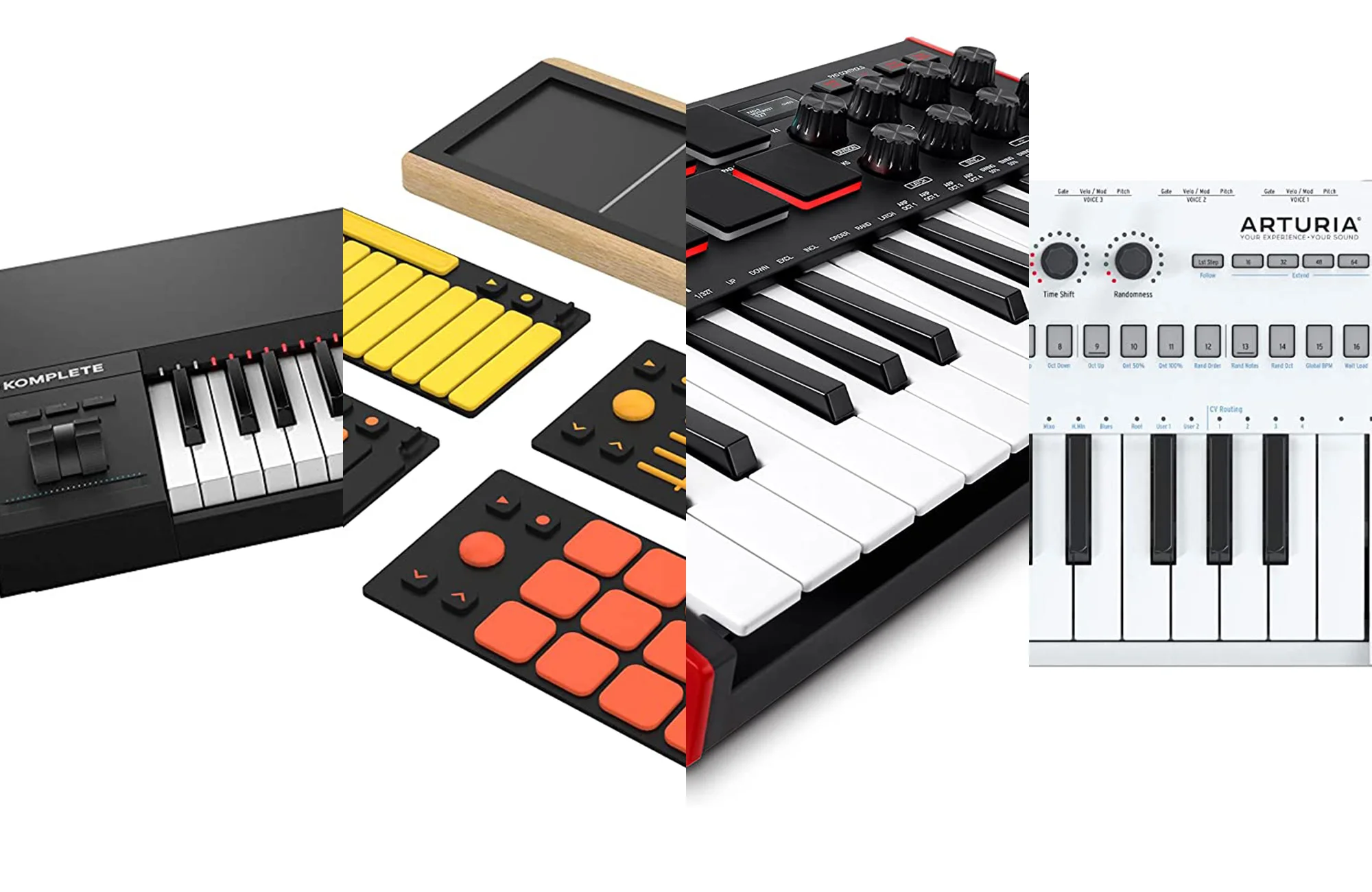Introduction
Creating and producing music has become increasingly accessible in recent years, thanks to advancements in technology. One essential tool for any musician or producer is a well-equipped music workstation. Whether you’re a beginner or an experienced musician looking to upgrade your setup, building a music workstation tailored to your needs can greatly enhance your creative process.
A music workstation is essentially a setup consisting of various hardware and software components that allow you to compose, record, edit, and mix music. From selecting the right computer to choosing the appropriate Digital Audio Workstation (DAW), and acquiring the necessary equipment, each decision you make plays a crucial role in the overall functionality and quality of your music workstation.
In this comprehensive guide, we will explore the various components and considerations involved in building an efficient music workstation. We will discuss the importance of selecting the right computer, the necessary hardware components, essential software and plugins, audio interfaces and soundcards, MIDI keyboards and controllers, studio monitors and headphones, as well as cables and connections. By the end of this guide, you will have a clear understanding of how to construct a fully-functional music workstation that fits your musical requirements and budget.
Building a music workstation can be an exciting and rewarding process. It empowers you to have complete control over your music production and opens up endless possibilities for creativity. Whether you’re a songwriter, producer, or composer, having a dedicated space for your musical endeavors can greatly enhance your workflow and overall output.
So, without further ado, let’s dive into the world of music workstations and explore the necessary steps to build your very own music production powerhouse.
Choosing the Right Computer
The computer is the backbone of any music workstation, serving as the central hub for all your music production activities. When it comes to choosing the right computer, there are a few key factors to consider.
First and foremost, you’ll want to select a computer with sufficient processing power and memory. Music production software, also known as Digital Audio Workstations (DAWs), can be demanding on the CPU, especially when working with multiple tracks, effects, and virtual instruments. Ideally, opt for a computer with a multi-core processor and at least 8GB of RAM to handle the workload smoothly.
Next, consider the type of operating system that best suits your needs. Both Windows and macOS are widely used in the music production industry. While Windows offers a wider range of hardware options and is generally more affordable, macOS is known for its stability and compatibility with professional audio interfaces and software.
Another crucial consideration is storage. Music files, samples, and software libraries can take up a significant amount of space, so it’s important to have ample storage available. Look for a computer with a solid-state drive (SSD) for faster read/write speeds, as this will greatly enhance the overall performance of your music workstation.
In terms of connectivity, ensure that the computer has sufficient USB ports, as you will likely need to connect various peripherals such as audio interfaces, MIDI controllers, and external hard drives. Additionally, having a dedicated Ethernet port can be advantageous for faster internet connectivity and online collaboration.
Lastly, consider the overall form factor and portability of the computer. If you plan on using your music workstation primarily in a fixed location, a desktop computer may be a suitable choice, offering more powerful components and expandability. However, if you require mobility for live performances or studio sessions, a laptop with sufficient processing power can be a convenient option.
Remember, when choosing a computer for your music workstation, it’s important to strike a balance between performance, reliability, and budget. Take the time to research and compare different models, read user reviews, and consult with other musicians and producers to ensure you make an informed decision.
Selecting the Right Digital Audio Workstation (DAW)
The Digital Audio Workstation (DAW) is the software at the heart of your music production setup. It provides the tools and functionality you need to record, edit, arrange, and mix your music. With a wide array of DAWs available, choosing the right one for your music workstation requires careful consideration.
First, evaluate your specific needs and workflow. Different DAWs have their own unique features, interface layouts, and workflow preferences. Some are more suited for recording and editing audio, while others excel in MIDI sequencing and virtual instrument integration. Consider the type of music you produce and the specific features you require to streamline your creative process.
Compatibility is another crucial factor. Ensure that the DAW you choose is compatible with your chosen operating system and computer. Most popular DAWs offer versions for both Windows and macOS, but it’s important to check for any compatibility issues, especially if you have specific hardware or plugins in mind.
It’s also worth exploring the available plugin support within the DAW. Plugins are essential for adding effects, instruments, and processing to your tracks. Make sure the DAW supports the plugin formats you use or plan to use, such as VST, AU, or AAX. Additionally, consider the availability and quality of stock plugins that come bundled with the DAW, as this can save you money on additional purchases in the future.
User interface and ease of use should not be overlooked. A well-designed user interface can greatly enhance your workflow and allow for a more intuitive and enjoyable music production experience. Take the time to explore demo versions or free trials of different DAWs to get a feel for their interface and functionality.
Lastly, consider the DAW’s community and support. Joining a vibrant community of users can provide valuable resources, tutorials, and answers to your questions. Some DAWs have dedicated forums and user communities where you can connect with fellow musicians and producers. Additionally, consider the availability of customer support and tutorials provided by the DAW developer.
Remember, there is no one-size-fits-all DAW. Each one has its own strengths and weaknesses, so it’s important to find the one that aligns with your specific needs and preferences. Don’t rush the decision-making process—take the time to research, test out trial versions, and seek recommendations from other music producers to ensure you make the right choice for your music workstation.
Necessary Hardware Components
Building a music workstation requires careful consideration of the necessary hardware components that will enhance the functionality and performance of your setup. These components work in tandem to provide a seamless and efficient platform for music production.
One essential hardware component is an audio interface. This device connects your computer to your studio monitors and other audio equipment, allowing for high-quality audio recording and playback. Look for an audio interface with low latency, multiple inputs and outputs, and high-quality converters to ensure pristine audio reproduction.
Another crucial hardware component is a MIDI keyboard or controller. Whether you prefer a keyboard-style MIDI controller or a pad-based controller, these devices allow you to input MIDI data into your DAW, enabling you to play virtual instruments, record MIDI sequences, and control various parameters. Choose a MIDI controller that fits your playing style and offers the necessary features for your music production needs.
Studio monitors are vital for accurate audio playback and mixing. Invest in a pair of high-quality active studio monitors that provide balanced frequency response and accurate sound representation. These monitors ensure that you can hear your music accurately and make informed decisions during the mixing process. Additionally, consider investing in acoustic treatment for your room to minimize unwanted reflections and improve the overall sound quality.
A reliable and comfortable pair of headphones is also an essential hardware component. Quality headphones are crucial for detailed audio monitoring during recording, editing, and mixing sessions. Look for headphones with a wide frequency response, good isolation, and a comfortable fit for extended periods of use.
Cables and connections are often overlooked but play a crucial role in your music workstation. Invest in high-quality cables for your audio interfaces, monitors, and other equipment to ensure clean and interference-free signal transmission. Additionally, consider cable management solutions to keep your workspace organized and reduce the risk of accidental damage or tangling.
While not mandatory, additional hardware components such as a microphone, external MIDI modules, and hardware synthesizers can expand your creativity and provide unique sonic possibilities. Evaluate your specific music production needs and budget to determine if these additional components are necessary for your setup.
Remember, when selecting hardware components, prioritize quality and functionality. Research different brands, read user reviews, and consider your specific music production requirements to make informed purchasing decisions. Building a music workstation is an investment, and choosing the right hardware components will contribute to the efficiency and longevity of your setup.
Essential Software and Plugins
Software and plugins are the virtual tools that bring your music to life within your Digital Audio Workstation (DAW). They provide a wide range of effects, instruments, and processing capabilities that enhance your music production process. Let’s explore some essential software and plugins to consider for your music workstation.
One of the key software components you’ll need is a digital audio editor. This software allows you to record, edit, and manipulate audio files with precision. It’s essential for tasks such as vocal comping, audio editing, and sample manipulation. Look for a digital audio editor that offers a user-friendly interface, comprehensive editing tools, and compatibility with your chosen DAW.
Virtual instruments are another crucial aspect of music production. These software-based instruments emulate real musical instruments and allow you to create rich and diverse sounds within your DAW. Whether you’re looking for realistic piano sounds, orchestral instruments, electronic synths, or drum machines, there are a plethora of virtual instrument plugins available on the market. Consider your preferred genre and style of music when choosing virtual instruments to ensure they align with your creative vision.
Effects plugins are essential for shaping and enhancing your audio. From EQ and compression to reverb and delay, effects plugins offer a multitude of options to shape the sound of your tracks. Consider investing in high-quality effects plugins that provide a wide range of parameters and versatility, allowing you to achieve the desired sonic character for your music.
When selecting software and plugins, compatibility with your chosen DAW is crucial. Ensure that the plugins you choose support the plugin formats accepted by your DAW, such as VST, AU, or AAX. Additionally, prioritize plugins that have a reputation for stability and offer regular updates and technical support.
It’s important to strike a balance between the quality and quantity of software and plugins. While it can be tempting to accumulate a vast collection, focus on acquiring essential tools that will cover a wide range of musical needs. Build your plugin collection gradually, experimenting with different ones to determine which best suits your style and workflow.
Lastly, stay updated with industry trends and advancements in software and plugins. Follow reputable music production blogs and forums to discover new releases, updates, and reviews. Virtual instruments and effects plugins are constantly evolving, so it’s worth exploring the latest offerings to expand your sonic possibilities.
Remember, building a collection of essential software and plugins is a continuous process. Take time to explore demo versions or free trials, and make informed choices based on your specific music production needs and preferences. With the right combination of software and plugins, you can unlock limitless creative potential within your music workstation.
Audio Interfaces and Soundcards
Audio interfaces and soundcards are essential components of any music production setup. They serve as the bridge between your computer and your studio monitors, microphones, and other audio equipment. The quality and capabilities of your audio interface or soundcard significantly impact the sound quality and overall performance of your music workstation.
When selecting an audio interface or soundcard, consider the number and type of inputs and outputs you require. If you plan on recording multiple instruments simultaneously or want to connect external hardware processors, opt for an interface with multiple inputs and outputs. Consider the type of connectors available, such as XLR, TRS, or RCA, to ensure compatibility with your existing equipment.
The audio quality of your interface is crucial. Look for an interface with high-quality analog-to-digital and digital-to-analog converters, as this will ensure accurate and transparent audio reproduction. Additionally, consider the sample rate and bit depth capabilities of the interface, as higher values can result in more detailed and dynamic recordings.
Latency is another important factor to consider. Latency refers to the delay between the audio signal entering the interface and being processed by your computer. Low latency is crucial for real-time monitoring, especially when recording instruments or vocals. Look for interfaces with low latency performance to ensure a seamless recording experience.
Some audio interfaces also offer built-in preamps, which are essential for recording microphones and other low-level audio signals. These preamps will greatly impact the quality and clarity of your recordings. If you plan on using external microphones, ensure that the interface has dedicated preamps or the option to connect external ones.
For those working in a home studio or limited space, portable audio interfaces are a great option. These interfaces offer convenience and mobility without sacrificing audio quality. They are ideal for recording on the go or setting up temporary studio spaces.
When it comes to soundcards, they are primarily designed for computers without dedicated audio interfaces. Soundcards provide basic audio input/output capabilities but may not offer the same level of quality or features as dedicated audio interfaces. Consider your specific needs and budget when deciding between a soundcard and audio interface.
Finally, ensure that the audio interface or soundcard is compatible with your chosen operating system and DAW. Most interfaces offer drivers for both Windows and macOS, but it’s important to verify compatibility to avoid any potential issues.
Investing in a high-quality audio interface or soundcard is a worthwhile investment that will greatly enhance the audio performance of your music workstation. Consider your specific needs, budget, and compatibility factors to make an informed decision and achieve the best possible sound quality for your music production endeavors.
MIDI Keyboards and Controllers
MIDI keyboards and controllers are essential tools for music production, allowing you to interact with your Digital Audio Workstation (DAW) and control various parameters while playing virtual instruments and recording MIDI sequences. These versatile devices come in a variety of shapes, sizes, and functionalities, catering to different musical styles and production workflows.
When selecting a MIDI keyboard or controller, consider the number of keys you require. Keyboards with 25, 49, or 61 keys are common options, but you can also find smaller or larger options depending on your specific needs and available space. If you primarily work with virtual instruments that require extensive playing range, a larger keyboard may be more suitable. However, if you have limited space or focus more on sequencing and programming, a compact keyboard may suffice.
It’s also essential to consider the keyboard’s key action. Keyboards with weighted or semi-weighted keys emulate the feel of a piano, offering a more realistic playing experience. On the other hand, keyboards with synth-action keys are lighter and more responsive, making them ideal for electronic music production and rapid sequencing.
Controllers come in various forms, such as pads, knobs, sliders, and transport controls. Consider the features you need for your production workflow. Pads are great for finger drumming or triggering samples, while knobs and sliders provide hands-on control over settings like volume, pan, and effects parameters. Transport controls allow you to start, stop, and navigate your DAW’s playback, making them convenient for recording and editing sessions.
Connectivity is another important consideration when choosing a MIDI keyboard or controller. USB connectivity is standard and allows for easy integration with your computer. Some keyboards also offer MIDI output ports for connecting to external MIDI devices. Additionally, some controllers have additional connectivity options such as CV/Gate outputs, allowing for integration with modular synthesizers and other analog equipment.
Integration with your chosen DAW is crucial. Look for MIDI keyboards and controllers that offer seamless integration with your DAW, including features like automatic mapping of controls, DAW-specific control surface templates, and the ability to customize assignments. This compatibility ensures a smooth and streamlined workflow, increasing your efficiency and creativity.
Finally, consider the build quality and durability. Look for keyboards and controllers made with quality materials and sturdy construction, as they are likely to withstand the demands of regular use. Additionally, ergonomic design features such as adjustable stands or customizable layout options can greatly enhance your comfort during long hours of music production.
MIDI keyboards and controllers are versatile tools that open up a world of creative possibilities within your music workstation. Consider your specific needs, musical style, and budget when selecting a MIDI keyboard or controller to ensure it aligns with your production workflow and enhances your overall music-making experience.
Studio Monitors and Headphones
Studio monitors and headphones play a crucial role in accurate audio monitoring and critical listening during the music production process. They provide the means to hear your music in detail and ensure that your mixes translate well across different playback systems. When building your music workstation, it’s important to consider both studio monitors and headphones for a comprehensive audio monitoring setup.
Studio monitors are specialized speakers designed for accurate and transparent audio reproduction. They are essential for obtaining a balanced and precise representation of your music’s frequency spectrum, dynamics, and stereo imaging. Look for studio monitors with a flat frequency response to ensure that your mixes translate accurately to other playback systems. Consider the size of the drivers and the power rating to match the size of your workspace and your desired listening volume levels.
Placement of studio monitors is also crucial. Position them at an equal distance from your listening position, forming an equilateral triangle. Adjust the angle and tilt of the speakers to direct the sound towards your ears while minimizing unwanted reflections. Additionally, consider investing in acoustic treatment for your room to minimize the influence of room acoustics on your audio perception.
Headphones are an important complement to studio monitors, as they allow for detailed monitoring in situations where you need to work quietly or need a different perspective. Look for headphones with a wide frequency response and good isolation to ensure accurate and immersive monitoring. Closed-back headphones provide better isolation and are suitable for recording, while open-back headphones offer a more spacious soundstage for mixing and critical listening.
When selecting headphones, it’s important to consider comfort, especially for long hours of use. Look for headphones with adjustable headbands, cushioned ear cups, and lightweight designs to minimize fatigue and discomfort.
It’s worth noting that studio monitors and headphones have their own unique characteristics and can provide different listening experiences. It’s beneficial to use both during the music production process to ensure a balanced and accurate representation of your mix. Regularly switching between studio monitors and headphones helps to identify any discrepancies or issues in your music’s sonic characteristics.
Lastly, consider investing in a headphone amplifier if your audio interface or computer output doesn’t provide sufficient power to drive high-quality headphones. A dedicated headphone amplifier ensures optimal performance and fidelity when using headphones.
Studio monitors and headphones are essential tools for monitoring and evaluating your music during the production process. By investing in high-quality monitors and headphones, you can ensure that your mixes sound great on a variety of playback systems and create professional-quality music that meets your artistic vision.
Cables and Connections
Cables and connections are often overlooked but play a crucial role in establishing reliable and interference-free communication between the various components of your music workstation. Choosing the right cables and ensuring proper connections will ensure optimal signal transfer and maintain audio integrity throughout your production process.
When it comes to audio cables, there are a few different types to consider. For connecting studio monitors, balanced audio cables such as XLR or TRS cables are recommended. These cables help reduce noise and interference, ensuring clean and accurate audio transmission. Ensure that the length of the cables matches your setup and try to keep them as short as possible to minimize signal degradation.
For MIDI connections, MIDI cables are necessary for linking your MIDI keyboard or controller to your audio interface or MIDI interface. MIDI cables transmit control and performance data, allowing for seamless communication between your hardware and software. It’s essential to use reliable and well-shielded MIDI cables to minimize data loss or interference.
When connecting your audio interface or soundcard to your computer, USB cables or Thunderbolt cables are commonly used. Ensure that the cables are compatible with your specific devices and offer reliable data transfer rates. High-quality cables with proper shielding will minimize the chance of audio dropouts or signal loss.
In addition to audio and MIDI cables, power cables are also important to consider. Make sure you have the correct power cables for your studio monitors, audio interfaces, MIDI equipment, and any other devices in your music workstation. If your cables show any signs of wear or damage, it is recommended to replace them to prevent any electrical hazards.
Furthermore, cable management is an often overlooked but important aspect to consider. Proper cable management helps keep your workspace organized, reduces the risk of accidental tripping, and makes it easier to identify and troubleshoot any cable-related issues. Cable ties, cable clips, and cable sleeves can help keep your cables neatly arranged, minimizing clutter and improving the overall aesthetics of your music workstation.
Regularly inspecting your cables and connections for any signs of damage or wear is essential. Replace any faulty or damaged cables promptly to maintain optimal signal transfer and avoid any potential audio issues.
To maintain audio quality and reduce the risk of signal degradation or interference, it’s advisable to invest in high-quality cables from reputable brands. Though it may require a slightly higher upfront cost, it will ultimately pay off in terms of improved audio fidelity and reliability.
Remember, giving due attention to cables and connections in your music workstation helps ensure a seamless and uninterrupted music production process. By investing in good quality cables, organizing your cables for efficient cable management, and regularly checking for any issues, you can create a professional and reliable setup that allows you to focus on creating music without any distractions or compromise in audio quality.
Finalizing Your Music Workstation
After carefully selecting and setting up all the essential components of your music workstation, there are a few final steps to take to ensure that everything is properly integrated and optimized for your creative process. Finalizing your music workstation involves fine-tuning, organization, and creating an inspiring environment.
One important step is to optimize your workspace. Arrange your equipment and peripherals in a way that promotes productivity and minimizes distractions. Consider ergonomics, placing your keyboard, mouse, and monitors at comfortable heights and angles to reduce strain on your body. Ensure that cables are tidily secured and that there is ample space for comfortable movement within your studio space.
Take the time to set up your Digital Audio Workstation (DAW) preferences and configure your audio and MIDI settings. Customize your workflow by assigning keyboard shortcuts, templates, and preferences that suit your specific needs. This personalization will save you time and enhance your workflow when working on different projects.
Organizing your project files and establishing a system for file management is key to staying organized and efficient. Create a logical folder structure for your music projects, samples, plugins, and presets. By organizing your files consistently, you’ll save time when searching for specific assets and ensure that your projects are easily accessible and transferable.
Finalizing your music workstation also involves optimizing your computer’s performance. Regularly update your operating system, drivers, and software to ensure that you have the latest features, bug fixes, and security updates. Conduct routine maintenance, such as disk cleanup and de-fragmentation, to keep your computer running smoothly. Consider optimizing your DAW’s performance by adjusting the buffer size, disabling unnecessary plugins, and managing system resources effectively.
Finally, consider the aesthetics and ambiance of your workspace. Personalize your music workstation with inspiring artwork, mood lighting, or plants to create a pleasant and engaging environment. This can help stimulate your creativity and make your music production sessions more enjoyable.
Remember, finalizing your music workstation is an ongoing process. Continuously evaluate and refine your setup as your needs and preferences evolve. Stay engaged with online music production communities and resources to stay up to date with the latest techniques, technology, and trends.
By finalizing your music workstation, you create a dedicated space that caters to your creative needs. Your optimized setup, personalized workflow, and inspiring environment will empower you to fully focus on your music and unlock your full artistic potential.
Conclusion
Building a music workstation is an exciting and essential step for musicians and producers looking to create professional-quality music. By carefully selecting the right components, such as the computer, digital audio workstation (DAW), hardware, software, and accessories, you can create a customized setup that meets your specific needs and maximizes your creative possibilities.
The computer serves as the foundation of your music workstation, so it’s important to choose one with sufficient processing power, memory, and storage capacity. Selecting the right DAW is crucial, as it will be your primary tool for recording, editing, and mixing music. Essential hardware components, such as audio interfaces, MIDI keyboards/controllers, studio monitors, and headphones, play integral roles in achieving accurate audio monitoring and precise control over your music.
Equally important are the software and plugins you choose, as they provide a range of effects, virtual instruments, and processing capabilities. Carefully consider the features, compatibility, and user interface of your selected software and plugins to ensure an intuitive and streamlined music production workflow.
Cables and connections are often overlooked, but their role in maintaining audio integrity and reliable signal transfer should not be underestimated. Invest in high-quality cables, organize and manage them properly, and regularly inspect them for any signs of wear or damage.
Finalizing your music workstation involves optimizing your workspace, setting up and configuring your DAW, organizing your project files, and creating an inspiring environment. Continuously evaluate and refine your setup as your needs evolve, and stay engaged with music production communities to stay up to date with the latest advancements in technology and techniques.
Remember, building a music workstation is a personal and ongoing process. Tailor your setup to your specific needs, budget, and musical style. With a well-built and optimized music workstation, you’ll be equipped to unleash your creativity, produce high-quality music, and embark on a fulfilling musical journey.







